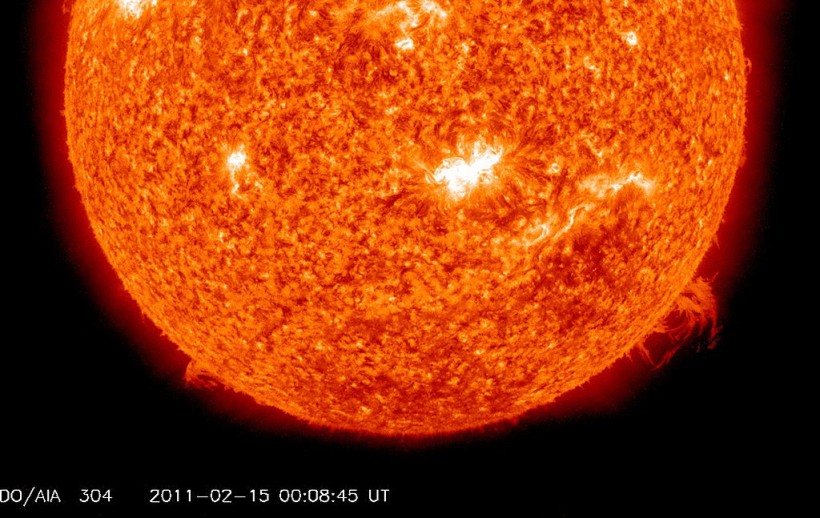Chinese Academy of Sciences (CAS) is looking for names for the nation's newest solar observatory. In October, the country will launch the space-based spacecraft into a sun-synchronous orbit.
The Advanced Space-Based Solar Observatory (ASO-S), China's latest solar observation satellite, will help scientists investigate the relationships between the solar magnetic field, solar flares, and coronal mass ejections.

An image by NASA's Solar Dynamics Observatory (SDO) spacecraft reveal the source of the strongest flare to have been released in four years by the Sun, leading to warnings that a resulting geo-magnetic storm may cause disruption to communications and electrical supplies once it reaches the Earth’s magnetic field.
About Advanced Space-Based Solar Observatory (ASO-S)
The first vehicle to carry three payloads would be the Advanced Space-Based Solar Observatory (ASO-S), which weighs about 888 kilograms.
According to CGTN, these payloads are the Hard X-ray Imager, the Lyman-Solar Telescope, and the Full-disk vector MagnetoGraph.
The observatory will be installed at the height of 720 kilometers. It will move in a sun-synchronous orbit, making one rotation every 90 minutes.
Chinese news website People's Daily Online pointed out that the satellite will generate about 500GB of data each day once the spacecraft enters the sun's orbit.
ALSO READ: There's A 10% Chance Space, Rocket Debris May Hit You on Earth; Can You Prevent It?
The Advanced Space-based Solar Observatory (ASO-S) is a mission with a focus on solar physics. It is the first Chinese satellite for solar physics research. Mashable wrote that 2011 saw the ASO-S mission proposed by the Chinese solar community.
China has much to gain from this satellite, which will help us understand how the solar magnetic field, solar flares, and coronal mass ejections are related.
Notably, the ASO-S is the replacement for the "Xihe"-named H-alpha Solar Explorer (CHASE). It will be launched in October to investigate the abrupt and violent physical mechanisms that cause solar flares.
It will be in use for four years, one more than the Xihe observatory, which was named for the sun goddess of ancient Chinese mythology.
For the current mission, CAS has launched a global call encouraging the public to suggest a name for the new probe.
China's Space Ambitions
A busy decade is ahead for the China National Space Administration (CNSA) as it prepares to send missions to the Moon, Venus, and potentially Mars.
According to a recent CAS assessment, out of the 13 suggested missions, China may conduct seven further missions to the said locations. However, these missions also involve inspecting asteroids and investigating the dark matter.
"The future development of space science needs urgent top-level planning and advanced layout to clarify the overall goal and investment portfolio from 2025 to 2030," read the report published in the Chinese Journal of Space Science (via Republic World).
Beijing has ambitions to dispatch a mission to Mars later this decade to collect samples from the planet. Interestingly, the CNSA plans to launch the mission in 2028 and deliver the samples by 2031, two years earlier than its rivals at NASA and the European Space Agency (ESA). Aside from this, China is also engaged in several Moon projects, including creating a lunar space station in collaboration with Roscosmos, the Russian space agency.
RELATED ARTICLE: NASA Fears China Taking Over Moon: What Did International Space Law Say About This Matter?
Check out more news and information on Space in Science Times.




![Aspirin Supports Immune System in Detecting and Targeting Cancer [Study]](https://1721181113.rsc.cdn77.org/data/thumbs/full/53271/89/56/50/40/aspirin-supports-immune-system-in-detecting-and-targeting-cancer-study.jpg)









